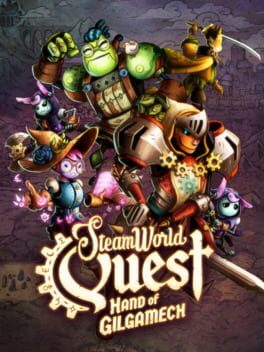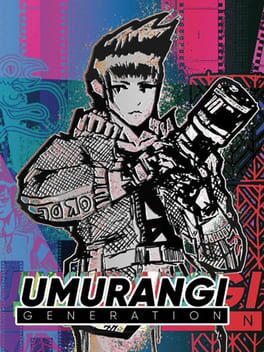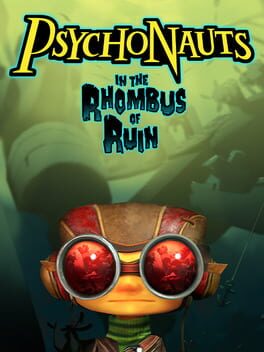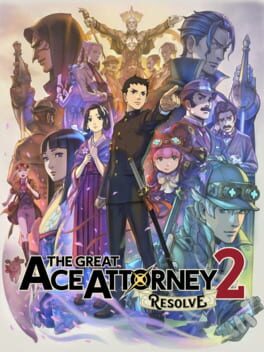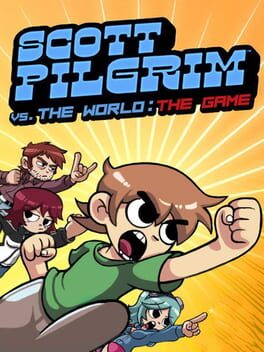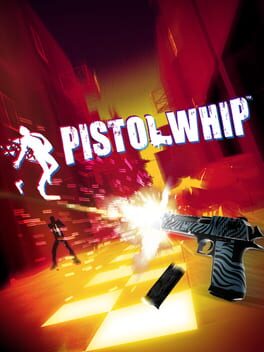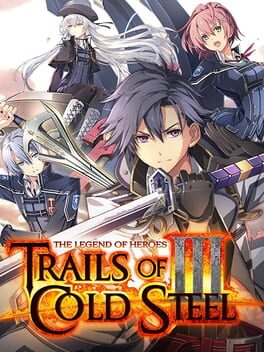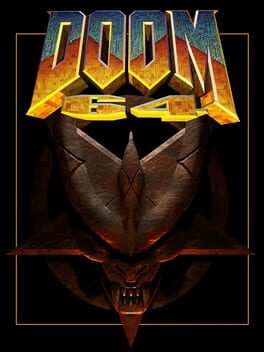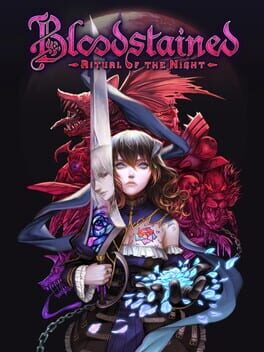Cakewalking
Library of Ruina awakened an interest in singleplayer deckbuilding RPGs for me, so I went on a genre cruise looking for similar games. And Hand of Gilgamech was really, really good at first. I like Steamworld artstyle and distinctive wobbly funky animations, I enjoyed the characters and their humorous non-binding misadventure. The mechanical rationale quickly unrolled here and presented a pleasant combat system where you have to balance the economy of cogs, setting up same-color combos by maintaining equilibrium between "free" cards and "hero" cards and keeping the deck rotation with free redraws. This was shaping up to be soild 4 stars! Until act 3 hit and many glaring issues became apparent:
— A lot of enemy designs are just bad. Too many encounters set up not exactly calling for interesting decisions but rather being a hindrance prolonging the length of combat. Too many enemies to whom you can't really lose even if you play poorly, but they waste so much of your brain energy when you play optimally.
— Because you can draw all "hero" cards and no economy cards it is possible to brick as early as first turn! Which is incredibly annoying, and coupled with sandbagging enemies this can lead to many wasted turns and just a total stall of a fight.
— And what I think the biggest wasted potential is how it doesn't exercise the greatest strength of deckbuilders and, just like many other RPGs, lets you slide into a comfortable rut and find one single strategy that will work until the end of time. Once the last character joined my party I quickly figured out a strong balanced composition that seemed to have a good damage output without glaring weaknesses. Then out of interest I opened some random let's play to check what they do. They were on the final boss, running the same exact composition as me down to specific cornerstone cards! Meaning we both independently ended up making the same decisions and didn't really bother to adapt, because there's no real need to adapt. This was the moment that pretty much killed it for me. In Ruina it was always a given that I'd get my ass handed if I dared to run the same exact builds for longer than A fight. In Gilgamech I could just go through motions for the rest of the game, slogging through annoying ass enemies until I win.
I still have about 30% of the campaign left, but this is also the point where story and level visuals fell off so even vibes aren't keeping it anymore. Really wish I didn't stop caring so abruptly, because the game is only one-two tuning passes away from being at least rather decent. But oh well.
— A lot of enemy designs are just bad. Too many encounters set up not exactly calling for interesting decisions but rather being a hindrance prolonging the length of combat. Too many enemies to whom you can't really lose even if you play poorly, but they waste so much of your brain energy when you play optimally.
— Because you can draw all "hero" cards and no economy cards it is possible to brick as early as first turn! Which is incredibly annoying, and coupled with sandbagging enemies this can lead to many wasted turns and just a total stall of a fight.
— And what I think the biggest wasted potential is how it doesn't exercise the greatest strength of deckbuilders and, just like many other RPGs, lets you slide into a comfortable rut and find one single strategy that will work until the end of time. Once the last character joined my party I quickly figured out a strong balanced composition that seemed to have a good damage output without glaring weaknesses. Then out of interest I opened some random let's play to check what they do. They were on the final boss, running the same exact composition as me down to specific cornerstone cards! Meaning we both independently ended up making the same decisions and didn't really bother to adapt, because there's no real need to adapt. This was the moment that pretty much killed it for me. In Ruina it was always a given that I'd get my ass handed if I dared to run the same exact builds for longer than A fight. In Gilgamech I could just go through motions for the rest of the game, slogging through annoying ass enemies until I win.
I still have about 30% of the campaign left, but this is also the point where story and level visuals fell off so even vibes aren't keeping it anymore. Really wish I didn't stop caring so abruptly, because the game is only one-two tuning passes away from being at least rather decent. But oh well.
2021
2020
Narratively, this one is classy: it's another take on the main theme of Psychonauts, that being the exploration of people as products of their past mental scars. You take a brief look inside the head of the most underutilized villain from the first game, and on the way there witness some neat character interactions, get exposed to more lore dumps and more jokes that generally land okay. It's a nice little bridge between the first and second game, I'm quite satisfied here.
Gameplay-wise this is nothing special: it's an early VR game where you interact with environments and solve puzzles. While Psychonauts psychic powers do fit VR quite nicely, the puzzles just aren't that good and can be usually reduced to exhaustion of things to interact with in the present room. RoR also lacks the physicality of VR games since you can only interact with things pointed directly at your sight, and, well this is probably the main appeal of the medium. Can confirm that you aren't missing out on a great experience if you just watch it on youtube.
It made even more excited for Psychonauts 2 though.
Gameplay-wise this is nothing special: it's an early VR game where you interact with environments and solve puzzles. While Psychonauts psychic powers do fit VR quite nicely, the puzzles just aren't that good and can be usually reduced to exhaustion of things to interact with in the present room. RoR also lacks the physicality of VR games since you can only interact with things pointed directly at your sight, and, well this is probably the main appeal of the medium. Can confirm that you aren't missing out on a great experience if you just watch it on youtube.
It made even more excited for Psychonauts 2 though.
It doesn't tie its plot threads as successfully as I hoped, and the last case doesn't manage to wow with yet another terrific layer of mystery to end the whole deal on an exclamation mark, but I'd be lying if I said that this game wasn't a joyous satisfying ride. It's beaming with personality and jovial moments, the cast of characters might be the best the series has seen, and being the second game writers were allowed to subvert them in exciting ways. The plot is good, and even more so than the first game it pulls off a story well-informed by the time period, thus being the Ace Attorney that's so refreshingly aware of the real life and the issues and challenges real people face. Best Takumi game since the Trials and Tribulations for sure, even if on the mystery side of things I'm not as over the moon as others seem to be.
2019
Sweet VR rhythm game that's clearly inspired by the likes of Beat Saber, but the form of physical activity it asks you to participate in I found to be pretty remarkable.
While Beat Saber, from what I played, mostly involves palm and hand movement with occasional obstacles dodging, in Pistol Whip you have to constantly juggle aiming, shooting, reloading, bullets dodging, obstacles dodging and melee attacks (titular pistol whipping) which makes it the most sweaty and intensive acyclical aerobic game I played in VR. I also appreciate that the game doesn't neccesarily force you abide to the rhythm, but awards more points to shots aligning. This approach smoothes out difficulty and learning curve (as the game is quite intensive as it is) and prepares you for high score runs once you come to sport the base activity and ready to incorporate the rhythm in your gameplay.
It's only really held back by a short track list and pretty low variety of EDM genres represented, but devs has shown the willingness to add more content with updates.
Overall? Heck of a good time, and you come a bit healthier from it.
While Beat Saber, from what I played, mostly involves palm and hand movement with occasional obstacles dodging, in Pistol Whip you have to constantly juggle aiming, shooting, reloading, bullets dodging, obstacles dodging and melee attacks (titular pistol whipping) which makes it the most sweaty and intensive acyclical aerobic game I played in VR. I also appreciate that the game doesn't neccesarily force you abide to the rhythm, but awards more points to shots aligning. This approach smoothes out difficulty and learning curve (as the game is quite intensive as it is) and prepares you for high score runs once you come to sport the base activity and ready to incorporate the rhythm in your gameplay.
It's only really held back by a short track list and pretty low variety of EDM genres represented, but devs has shown the willingness to add more content with updates.
Overall? Heck of a good time, and you come a bit healthier from it.
2020
1997
This is the lost Doom 3 game that community had finally rediscovered and reevaluated. Loved the clay look of enemies, which seems like a logical step forward for OG Doom art-design, liked touched up balance that makes the game feel pretty fresh. Level design is a bit of a mixed bag, but there's a certain pacing to how the game ramps up complexity of levels with plenty of standout maps along the way, especially in the middle third. All in all a great entry in the series that aged better than any other console shooter of that era.
2020
Terrific shooter that shows how confident id software is in their tech and design philosophy.
Mechanically I have very little to complain about. I feel like some of the weapon upgrades are little redundant (tho the only one I don't see the use case for is assault rifle micro missiles), and sword that marketing was so focused on is pretty meh in implementation. When it comes to enemies, the arch-vile felt pretty underused and didn't present an oh shit threat the way it did in OG Doom. But otherwise it's an incredible step up from the previous game and clear design inspiration and trend setter for all other shooters on the market.
Where id still needs to step up their game is level design. And I don't mean the arena layouts which were all pretty memorable and great, but even bigger linearity of the progression feels like quite a missed opportunity with how much freedom an increased emphasis on platforming and amazing map system could provide. Frustrating invisible walls restrict any creative solutions you could come up with in traversal challenges delineating one single path of level progression. I understand that focus tests might have established that complicated level design would probably be too much to handle for general gaming population on top of increased complexity of combat and traversal. I can not feel a little bit underwhelmed though that the game that amplifies the thrills of id shooter combat so well doesn't manage to recapture the excitement and reward of maze maneuvering from classic shooter games. The Foundry from 2016 is still the best level of nu-doom and it wasn't anything the average joe gamer couldn't handle so I hope for the third game they'll try to figure out how that design could be developed upon.
The game's still awesome tho and I might bump the score up to full 5 stars if DLCs manage to expand the strenghts of Eternal even further.
Mechanically I have very little to complain about. I feel like some of the weapon upgrades are little redundant (tho the only one I don't see the use case for is assault rifle micro missiles), and sword that marketing was so focused on is pretty meh in implementation. When it comes to enemies, the arch-vile felt pretty underused and didn't present an oh shit threat the way it did in OG Doom. But otherwise it's an incredible step up from the previous game and clear design inspiration and trend setter for all other shooters on the market.
Where id still needs to step up their game is level design. And I don't mean the arena layouts which were all pretty memorable and great, but even bigger linearity of the progression feels like quite a missed opportunity with how much freedom an increased emphasis on platforming and amazing map system could provide. Frustrating invisible walls restrict any creative solutions you could come up with in traversal challenges delineating one single path of level progression. I understand that focus tests might have established that complicated level design would probably be too much to handle for general gaming population on top of increased complexity of combat and traversal. I can not feel a little bit underwhelmed though that the game that amplifies the thrills of id shooter combat so well doesn't manage to recapture the excitement and reward of maze maneuvering from classic shooter games. The Foundry from 2016 is still the best level of nu-doom and it wasn't anything the average joe gamer couldn't handle so I hope for the third game they'll try to figure out how that design could be developed upon.
The game's still awesome tho and I might bump the score up to full 5 stars if DLCs manage to expand the strenghts of Eternal even further.
2010
I see why Skate killed Tony Hawk. At the time when Birdman's games completely fumbled their way into seventh generation of consoles, the laser focus on the physicality of real skateboarding with unconventional yet awesome controls made Skate such a cooler breeze next to the series that couldn't rediscover itself. For that alone, plus pretty sublime map design Skate 3 gets a "nice" mark – it's just an enjoyable game to go back fiddle with for a 15 minutes at a time.
I miss that Tony Hawk personality though: inventive gameplay objectives, crude MTV humor, petty skaters that brag about DVD players in their cars, globe throtting jumps between skating toy versions of real cities. Somehow an open-world skating game is less scenic than a private lobby in THUG PRO where I can load up a Moscow map and show my US homies around Red Square, talk about sights and history while doing sick flips over mausoleum. Of course I don't ask to replicate that exact mood: the Tony Hawk series itself is a time capsule of an era long gone. But really, aside from a really cool live-action intro Skate 3 just didn't make me interested in anything other than its half-pipes, ramps and rails. I can only hope that enough time passed for eventual Skate 4 to gain its face – because these ramps are absolutely the best feeling one can find.
I miss that Tony Hawk personality though: inventive gameplay objectives, crude MTV humor, petty skaters that brag about DVD players in their cars, globe throtting jumps between skating toy versions of real cities. Somehow an open-world skating game is less scenic than a private lobby in THUG PRO where I can load up a Moscow map and show my US homies around Red Square, talk about sights and history while doing sick flips over mausoleum. Of course I don't ask to replicate that exact mood: the Tony Hawk series itself is a time capsule of an era long gone. But really, aside from a really cool live-action intro Skate 3 just didn't make me interested in anything other than its half-pipes, ramps and rails. I can only hope that enough time passed for eventual Skate 4 to gain its face – because these ramps are absolutely the best feeling one can find.
Competent and fun, Bloodstained is the game of just enoughs. Just enough mechanics to entertain but not overwhelm. Just enough graphical sheen to look pleasant. Just enough variety in enemies, weapons and upgrades to keep you engaged with new toys. Just enough stages and bosses to feel lengthy but not padded. Just enough subtlety in secrets to keep you pay attention to environments and make you develop sense of place. My rating is also jusy high enough to reflect my enjoyment.
Terrific puzzle design that weaves new mechanics into play and raises the complexity so elegantly it never feels like the next solution is out of reach. The raddest platforming tech that encourages alternative faster routes through levels with time ranks and leaderboards. A cute story that's very well aware of Touhou canon and respects its characters. This has to be the best puzzle-platformer I've played and sometimes I think we don't deserve fangames of such high quality,
